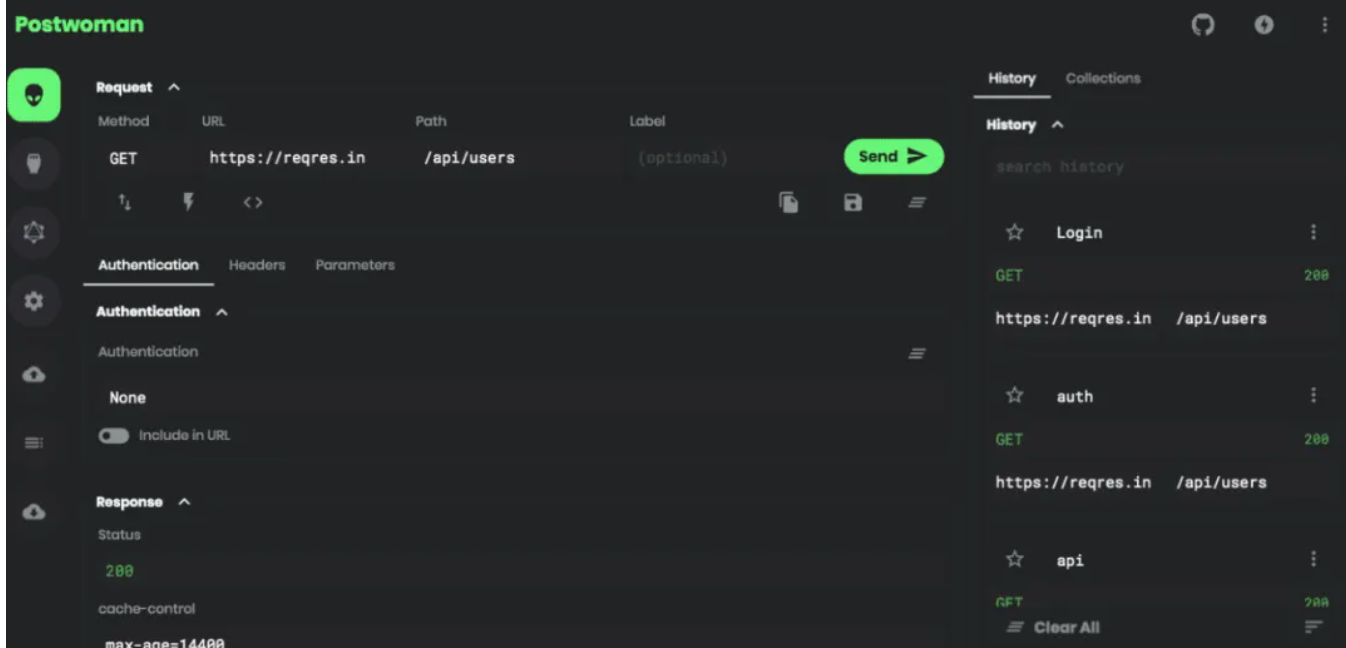
For developers who have used Postman or ApiPost, you might have been searching for a simpler and more lightweight API testing tool. Hoppscotch, a free, open-source, and aesthetically pleasing API debugging tool, is the perfect solution.
Project Overview
Hoppscotch, originally known as Postwoman, is built on Node.js and aims to streamline API development and debugging. It offers many of the same functions as Postman but is known for its more lightweight and simpler design, making it a powerful tool for API interface debugging. Developers can quickly discover issues and improve their development efficiency with this tool.
Since its open-source release, Hoppscotch has garnered significant support from developers and internet R&D teams, with 54 release versions so far and continuous updates. It has recently achieved a new milestone on GitHub, boasting 64.7K Stars.
Key Features
1. Support for Multiple HTTP Request Formats
Hoppscotch supports a wide range of HTTP request types like GET, POST, PUT, DELETE, making it ideal for RESTful API development and debugging. Additionally, it handles special request types like WebSocket, GraphQL, and SSE, covering the vast majority of developer needs.
2. Intuitive and Simple User Interface
The UI is minimalist and intuitive, allowing all debugging information and request results to be displayed clearly, which reduces the complexity of API debugging for developers.
3. Fast Response Time
Hoppscotch is lighter compared to other API testing tools, offering fast response speeds. This enables developers to quickly receive feedback from their requests, greatly improving debugging efficiency.
4. Environment Variable Support
Developers can save requests and environment variables, making it easier to debug in different environments.
5. Flexible API Documentation Management
Hoppscotch allows developers to manage, edit, and view API documentation in a centralized way, preventing information from being scattered across various locations. It also supports sharing API documentation, making team collaboration easier.
6. Local or Online Usage
Hoppscotch provides the flexibility to either use it online through the web version or clone the project locally and run it on your machine.
7. Open-Source and Free
Being open-source, Hoppscotch is freely available for anyone to use, modify, and extend. Its active community ensures ongoing optimization and improvements, maintaining the stability and reliability of the project.
8. Browser Extension Support
To enhance the user experience, Hoppscotch offers a browser extension for more convenience.
Use Cases
- API Development and Testing: Ideal for developers who need to work on APIs. Hoppscotch’s simple and quick interface helps quickly identify issues during debugging.
- Team Collaboration: The ability to save request histories and manage API documentation makes it easier to collaborate and share API test data within teams.
- Complex Data Request Debugging: Hoppscotch is not only suitable for basic HTTP requests but also more complex requests such as GraphQL and WebSocket debugging.
Conclusion
For developers frequently working with API debugging, Hoppscotch provides an ideal solution. It combines ease of use, fast response times, and support for various request formats and protocols into a visually pleasing and efficient tool. Whether you're an individual developer or part of a team, Hoppscotch can greatly enhance your API development and debugging efficiency.